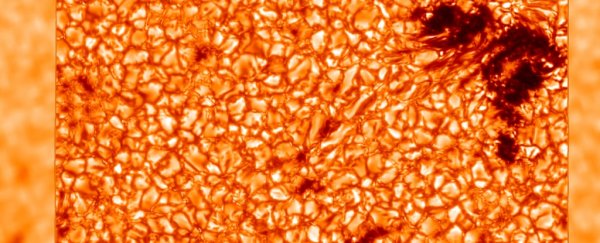Sometimes you just need to take a step back from the huge number of issues here on Earth, take a deep breath, and stare at the soothing movements of the solar photosphere.
In this case, thanks to the Swedish 1-meter Solar Telescope (SST) in Spain, you can enjoy a close-up of the pulsing blobs moving around on our Sun.
The video below is part of a series of special multi-wavelength observations published last year, captured to closely examine the Sun's features and better understand how its non-thermal energy moves around.
This one shows the Sun in a wavelength of light near the K-line of ionised calcium.
This area is called Active Region 12593, and it's big – really big.
Just to get a scale of what you're looking at, that close-up image is approximately 46,900 kilometres wide and 33,500 kilometres tall: you could fit twelve Earths across the entire picture.
Once the video zooms in, the blobs or grains you see are called solar granules. They're caused by convection currents - plasma rising and falling on the surface as the hot gas rises and, once cooled, falls back down again.
The darker sections are sun spots. We observe them all the time, and they're caused by a flux in the magnetic field lowering temperatures in certain areas on the surface of the Sun.
The science behind this footage is fascinating, sure. But sometimes it's just nice to stare at our Sun for a bit… maybe not literally, though.
A paper accompanying this work has been published in Astronomy & Astrophysics.
